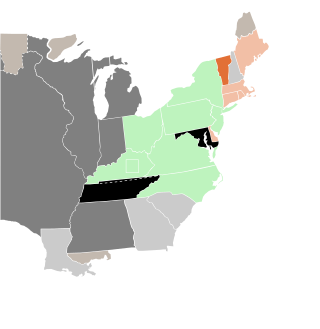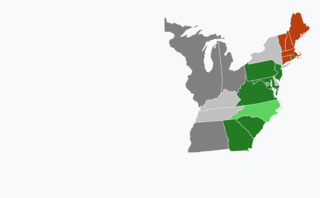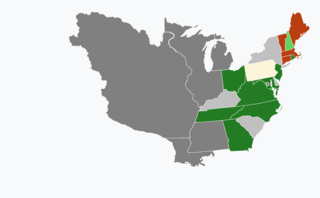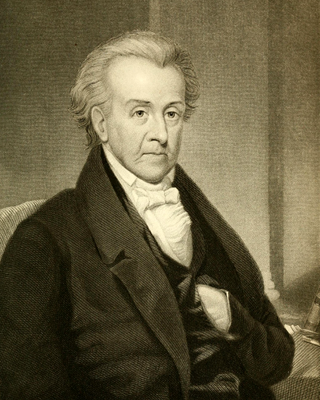
The 1808–09 United States Senate elections were elections that had the Federalist Party gain one seat in the United States Senate, and which coincided with the 1808 presidential election. The Federalists had gone into the elections with such a small share of Senate seats that even if they had won every election, they would have still remained a minority caucus.

The 1814–15 United States Senate elections were elections that had the Democratic-Republican Party lose a seat but still retain an overwhelming majority in the United States Senate. Unlike in recent elections, the minority Federalists had gone into the elections with a chance of regaining their long-lost majority had they swept almost all the seats. However, only one seat switched parties. Two seats held by Democratic-Republicans were left unfilled until long after the next Congress began.

The 1802–03 United States Senate elections were elections for the United States Senate which resulted in the Democratic-Republican Party maintaining and greatly expanding their majority of seats to over two-thirds of the Senate.

The 1801 Rhode Island gubernatorial election was an uncontested election held on April 1, 1801 to elect the Governor of Rhode Island. Arthur Fenner, the incumbent Governor, was the sole candidate and so won with 100% of the vote.

United States gubernatorial elections were held in 1800, in 11 states, concurrent with the House, Senate elections and presidential election.

United States gubernatorial elections were held in 1801, in 13 states.

United States gubernatorial elections were held in 1802, in 12 states, concurrent with the House and Senate elections.

United States gubernatorial elections were held in 1804, in 13 states, concurrent with the House, Senate elections and presidential election.
United States gubernatorial elections were held in 1810, in 13 states, concurrent with the House and Senate elections.
United States gubernatorial elections were held in 1806, in 10 states, concurrent with the House and Senate elections.

United States gubernatorial elections were held in 1805, in 13 states.

The 1803 New Hampshire gubernatorial election took place on March 8, 1803. Incumbent Federalist Governor John Taylor Gilman won re-election to a tenth term, defeating Democratic-Republican candidate, former Governor and United States Senator John Langdon in a re-match of the previous year's election.

The 1801 Connecticut gubernatorial election took place on April 9, 1801. Incumbent Federalist Governor Jonathan Trumbull Jr. won re-election to a fourth full term, defeating Democratic-Republican candidate Richard Law.

The 1803 Connecticut gubernatorial election took place on April 14, 1803. Incumbent Federalist Governor Jonathan Trumbull Jr. won re-election to a sixth full term, defeating Democratic-Republican candidate Ephraim Kirby in a re-match of the previous year's election.

The 1804 Connecticut gubernatorial election took place on April 12, 1804. Incumbent Federalist Governor Jonathan Trumbull Jr. won re-election to a seventh full term, defeating Democratic-Republican candidate William Hart.

The 1807 Connecticut gubernatorial election took place on April 9, 1807. Incumbent Federalist Governor Jonathan Trumbull Jr. won re-election to a tenth full term, defeating Democratic-Republican candidate William Hart in a re-match of the previous year's election.

The 1812 Massachusetts gubernatorial election was held on April 6, 1812.

The 1810 Massachusetts gubernatorial election was held on April 2, 1810.

The 1807 Massachusetts gubernatorial election was held on April 6, 1807.

The 1814 Connecticut gubernatorial election took place on April 11, 1814.














